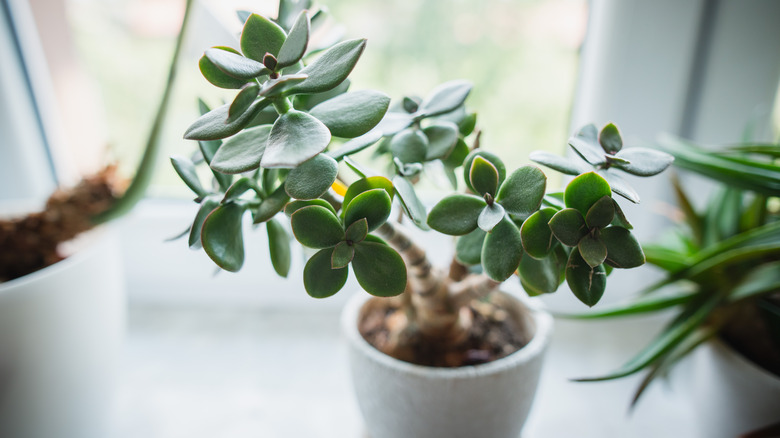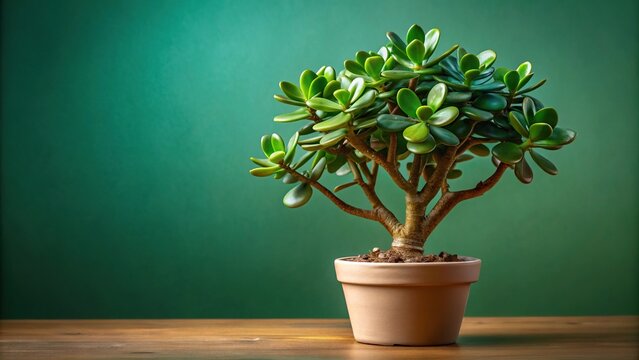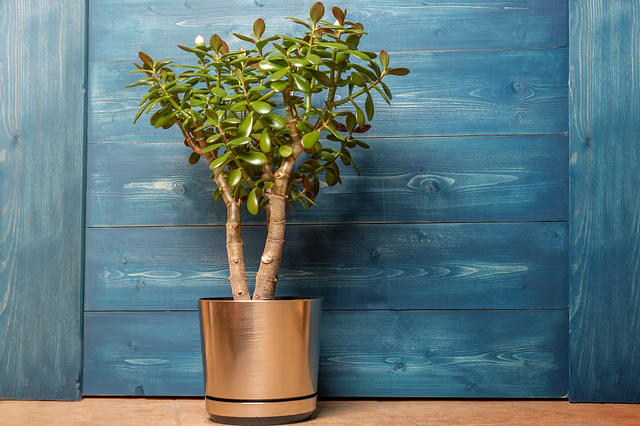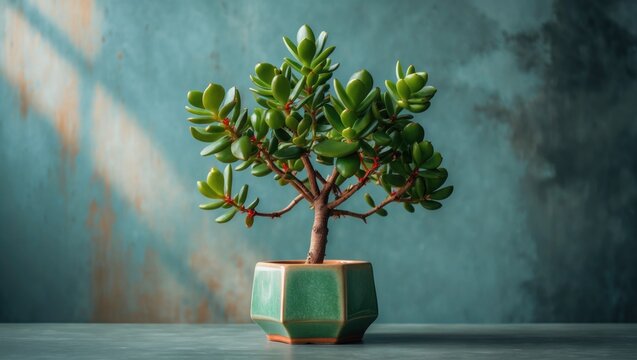Jade plants have long been treasured as a symbol of prosperity, good luck, and friendship. Native to South Africa and Mozambique, these hardy succulents have captured hearts worldwide with their fleshy, glossy leaves and tree-like structure. Known scientifically as Crassula ovata, jade plants are loved for their easy care, attractive appearance, and long lifespan — some can live for decades, even generations!
Whether you’re a seasoned plant enthusiast or a complete beginner, caring for a jade plant is simple with the right guidance. In this comprehensive guide, you’ll learn everything you need to know about how to successfully care for your jade plant, from choosing the right pot to handling pests and diseases.

Why Choose a Jade Plant?
Before we dive into care tips, let’s talk about why jade plants are so popular:
- Low Maintenance: Perfect for beginners and busy homeowners.
- Long-Lived: They can thrive for many years with minimal effort.
- Attractive Appearance: Glossy, oval-shaped leaves with thick stems resemble miniature trees.
- Air Purifying: Jade plants help improve indoor air quality.
- Symbolic: In many cultures, they symbolize wealth, prosperity, and good fortune.

The Best Growing Conditions for Jade Plants
Like most succulents, jade plants thrive in bright, dry conditions. Let’s break down their preferred environment:
1. Light Requirements
Jade plants love sunlight. Place them in a spot that gets at least 4-6 hours of bright, indirect sunlight daily.
- Indoors: A south-facing window is ideal.
- Outdoors: Place in a sunny spot but protect from intense afternoon heat.
Tip: If the leaves start to turn red at the edges, that’s a sign they’re getting plenty of light — and it’s perfectly healthy!
2. Temperature Preferences
Jade plants prefer temperatures between 65°F to 75°F (18°C to 24°C) during the day, and no lower than 50°F (10°C) at night.
- Avoid placing them near cold drafts, heaters, or air conditioners.
- Bring outdoor plants indoors before the first frost.
3. Soil Type
Use a well-draining soil mix specifically designed for succulents or cacti.
- A good jade plant soil mix contains coarse sand, perlite, and peat moss.
- Avoid moisture-retentive soil to prevent root rot.

Choosing the Right Pot
A good pot is crucial for your jade plant’s health.
- Use a ceramic or terracotta pot with drainage holes.
- Terracotta is especially helpful because it allows excess moisture to evaporate.
- Ensure the pot is slightly larger than the root ball to prevent overwatering.
Tip: Avoid decorative pots without drainage holes unless you’re using a cachepot method (keeping the plant in a nursery pot inside a decorative container).

Watering Jade Plants: The Most Important Care Factor
Overwatering is the number one cause of jade plant problems. These succulents store water in their thick leaves and stems, making them drought-tolerant.
Watering Tips:
- Let the soil dry out completely between waterings.
- Water thoroughly, allowing excess water to drain out.
- In winter, reduce watering frequency to once a month or when leaves start to look slightly wrinkled.
Signs of Overwatering:
- Yellowing, mushy leaves.
- Root rot.
- Dropping leaves.
Signs of Underwatering:
- Wrinkled, shriveled leaves.
Fertilizing Jade Plants
Jade plants aren’t heavy feeders but benefit from occasional fertilizing, especially during the growing season (spring and summer).
Fertilizer Tips:
- Use a balanced, water-soluble fertilizer diluted to half strength.
- Fertilize once a month during active growth.
- Avoid fertilizing in fall and winter when the plant is dormant.
Recommended Fertilizers:
- Cactus or succulent fertilizers.
- Balanced all-purpose houseplant fertilizer (10-10-10 or 20-20-20 diluted).
Pruning and Shaping Your Jade Plant
Jade plants can grow leggy or unbalanced without occasional pruning.
Pruning Benefits:
- Encourages bushier, compact growth.
- Removes dead or damaged leaves.
- Helps shape the plant into an attractive form.
How to Prune:
- Use clean, sharp scissors or pruning shears.
- Remove leggy or awkwardly placed stems.
- Trim just above a leaf node (where leaves grow from the stem).
- Pinch off new tips to encourage branching.
Tip: Pruned cuttings can be propagated easily in soil or water.
Propagating Jade Plants
One of the joys of owning a jade plant is how effortlessly it propagates.
Leaf or Stem Cutting Method:
- Choose a healthy leaf or 3-4 inch stem cutting.
- Allow the cut end to callous over for 1-2 days.
- Plant it in dry, well-draining succulent soil.
- Lightly mist the soil until roots form in a few weeks.
Tip: New cuttings should be kept in bright, indirect light while rooting.
Common Pests and Problems
Though jade plants are hardy, they can occasionally fall prey to pests or diseases.
Common Pests:
- Mealybugs: Look like tiny cotton balls on leaves and stems.
- Spider Mites: Fine webbing and speckled leaves.
- Scale Insects: Hard brown bumps on stems.
Natural Treatments:
- Wipe leaves with a cotton swab dipped in rubbing alcohol.
- Spray with insecticidal soap or neem oil.
Common Issues:
- Root Rot: Caused by overwatering. Save by removing rotten roots and repotting in dry soil.
- Leaf Drop: Can result from sudden temperature changes, overwatering, or underwatering.
Seasonal Care for Jade Plants
Spring and Summer:
- Move outdoors gradually (if desired) once temperatures consistently stay above 55°F.
- Increase watering frequency but always check soil moisture first.
- Fertilize monthly.
Fall and Winter:
- Bring plants indoors before the first frost.
- Reduce watering to once every 4-6 weeks.
- Avoid fertilizing.
Tip: Jade plants prefer cooler winter temperatures to encourage blooming, though blooms are rare indoors.
How to Encourage a Jade Plant to Bloom
While jade plants can bloom with small, star-shaped pink or white flowers, it’s a rare event, especially indoors. To increase your chances:
- Provide cool nighttime temperatures (around 50°F) in winter.
- Reduce watering in winter to trigger dormancy.
- Ensure your plant gets plenty of bright light year-round.
- Keep the plant slightly root-bound (don’t repot too frequently).
Final Thoughts
The jade plant is a timeless, easy-care houseplant that brings natural beauty, good fortune, and a touch of nature to your space. With its glossy, fleshy leaves and tree-like form, it’s a perfect addition to windowsills, desktops, and patios.
By following these care tips — giving your jade plant proper light, minimal water, good drainage, and occasional feeding — you’ll enjoy a thriving, healthy plant for years, perhaps even decades. Its resilience and charm make it one of the best houseplants for both beginners and experienced plant lovers alike.
So, whether you’ve just brought one home or you’re nurturing an older plant, you now have everything you need to keep your jade plant happy, healthy, and growing successfully.






Leave A Comment